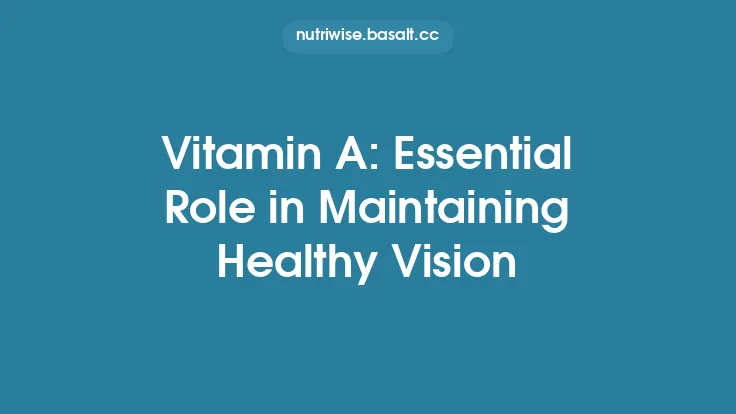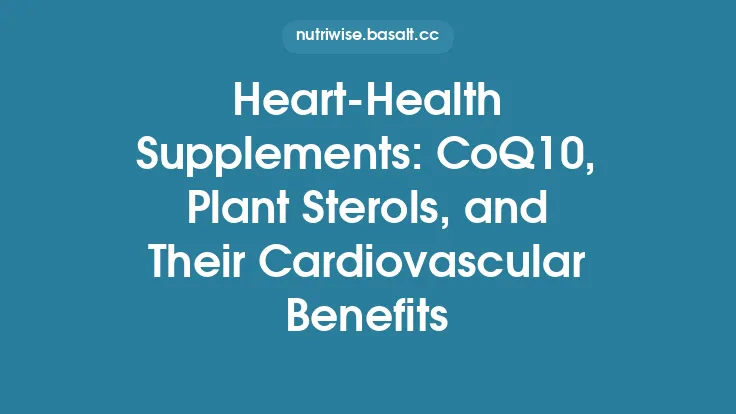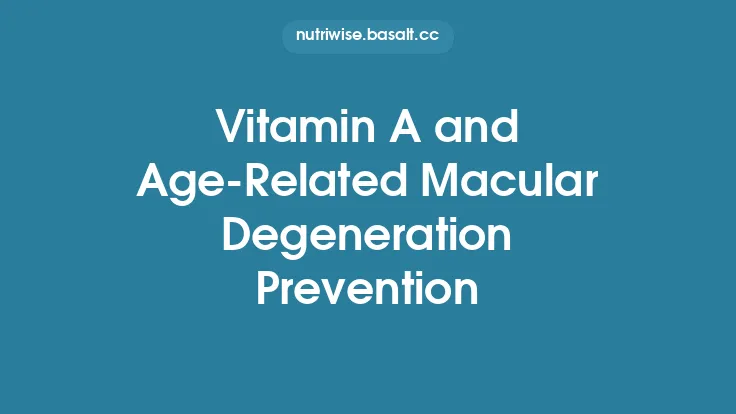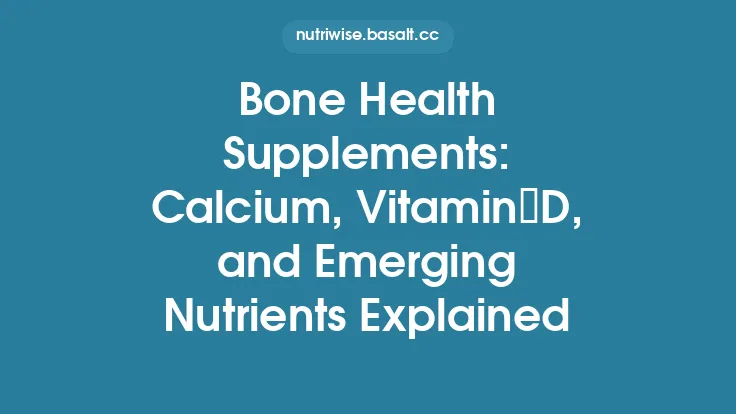Lutein and zeaxanthin are carotenoid pigments that accumulate in the retina, particularly in the macula—the central part of the eye responsible for sharp, detailed vision. Unlike many nutrients that are stored primarily in the liver or muscle, these two compounds are selectively deposited in the eye, where they form a protective “yellow filter” that absorbs high‑energy blue light and neutralizes reactive oxygen species. This unique distribution underpins their reputation as the cornerstone of eye‑health supplementation.
The Science Behind Lutein and Zeaxanthin
Molecular Structure and Light‑Filtering Capacity
Both lutein and zeaxanthin share a similar chemical backbone (C₄₀H₅₆O₂) but differ in the placement of double bonds, giving them slightly different absorption spectra. Their conjugated double‑bond system allows them to absorb light in the 400–500 nm range, precisely where blue light peaks. By intercepting this high‑energy radiation before it reaches photoreceptor cells, the carotenoids reduce photochemical damage and preserve the integrity of the retinal pigment epithelium (RPE).
Antioxidant Action
Oxidative stress is a major driver of age‑related macular degeneration (AMD) and cataract formation. Lutein and zeaxanthin scavenge singlet oxygen and peroxyl radicals, limiting lipid peroxidation in the photoreceptor outer segments. Their antioxidant potency is comparable to that of vitamin E, but their localization within the macula gives them a strategic advantage.
Synergy with Other Ocular Nutrients
The macular pigment works in concert with other antioxidants such as vitamin C, vitamin E, and zinc. While lutein/zeaxanthin directly filter light, the other nutrients recycle oxidized carotenoids back to their active form, extending the protective cycle. This synergy is a key rationale for the inclusion of lutein and zeaxanthin in comprehensive eye‑health formulas.
Dietary Sources and Bioavailability
| Food (≈100 g) | Lutein (mg) | Zeaxanthin (mg) |
|---|---|---|
| Kale (raw) | 23.5 | 0.5 |
| Spinach (cooked) | 12.0 | 0.3 |
| Corn (cooked) | 1.5 | 0.2 |
| Egg yolk (large) | 0.3 | 0.2 |
| Orange pepper (raw) | 0.5 | 0.1 |
*Note: The actual amount absorbed depends on the food matrix, fat content, and individual digestive efficiency.*
Enhancing Absorption
- Dietary Fat: Carotenoids are fat‑soluble; consuming lutein‑rich foods with 5–10 g of healthy fat (e.g., olive oil, avocado) can increase plasma concentrations by up to 2‑fold.
- Food Processing: Light cooking (steaming, sautéing) breaks down cell walls, releasing lutein and zeaxanthin from the plant matrix. Over‑cooking, however, can degrade them.
- Supplement Formulation: Softgel capsules using oil bases (e.g., MCT oil, sunflower oil) or micro‑encapsulation technologies improve stability and absorption compared with dry tablets.
Clinical Evidence for Vision Protection
Age‑Related Macular Degeneration (AMD)
Large‑scale randomized controlled trials, such as the Age‑Related Eye Disease Study 2 (AREDS2), demonstrated that adding 10 mg lutein and 2 mg zeaxanthin to the original AREDS formula (which contained high‑dose vitamin C, vitamin E, zinc, copper, and beta‑carotene) resulted in a modest but statistically significant reduction in the progression to advanced AMD, especially among participants with low baseline macular pigment density.
Cataract Prevention
Observational cohort studies have linked higher dietary intake of lutein and zeaxanthin with a lower incidence of nuclear and cortical cataracts. While randomized trials are fewer, a 12‑month supplementation study showed a measurable increase in lens opacity scores in the placebo group versus stability in the lutein/zeaxanthin group.
Visual Performance Metrics
- Contrast Sensitivity: Supplementation (10 mg lutein + 2 mg zeaxanthin daily) for 6 months improved contrast sensitivity by 8–12 % in healthy adults, a benefit that translates to better night driving and reading.
- Glare Recovery: Participants reported faster recovery from bright light exposure, correlating with increased macular pigment optical density (MPOD) measured by heterochromatic flicker photometry.
Recommended Dosage, Safety, and Potential Interactions
| Population | Typical Daily Dose | Upper Safe Limit* |
|---|---|---|
| General adult | 10 mg lutein + 2 mg zeaxanthin | 20 mg lutein, 5 mg zeaxanthin |
| High‑risk AMD | 20 mg lutein + 4 mg zeaxanthin | Same as above |
| Children (≥4 y) | 2–4 mg lutein, 0.5–1 mg zeaxanthin | No established UL |
\*Based on current EFSA and FDA guidance; adverse effects are rare but can include mild gastrointestinal upset at very high intakes.
Interactions
- Warfarin: High doses of vitamin K–rich foods (e.g., kale) may affect anticoagulant therapy, but lutein/zeaxanthin themselves have minimal impact.
- Statins: Some evidence suggests statins may modestly lower plasma carotenoid levels; supplementation can offset this effect.
- Smoking: Smokers often have lower carotenoid status; supplementation may be particularly beneficial, though smoking cessation remains paramount.
Choosing a High‑Quality Supplement
- Purity and Standardization – Look for products that specify lutein ≥ 10 mg and zeaxanthin ≥ 2 mg per serving, with ≥ 90 % purity confirmed by HPLC analysis.
- Oil Base – MCT oil, safflower oil, or a blend of omega‑6/omega‑3 oils provide a stable environment and enhance absorption.
- Third‑Party Testing – Certifications from USP, NSF, or ConsumerLab add confidence that the label matches the contents and that contaminants (heavy metals, pesticides) are absent.
- Stability – Carotenoids are light‑sensitive; opaque, amber‑colored softgels or blister packs protect against degradation.
- Additives – Avoid unnecessary fillers, artificial colors, or excessive synthetic antioxidants that could interfere with the natural antioxidant network.
Integrating Supplements with Lifestyle Strategies
- Screen Time Management: Blue‑light‑filtering glasses and screen‑time breaks reduce the load on macular pigments, allowing lutein/zeaxanthin to work more efficiently.
- UV Protection: Sunglasses that block 99–100 % of UVA/UVB rays prevent oxidative stress that overwhelms the antioxidant system.
- Balanced Diet: A Mediterranean‑style diet rich in leafy greens, colorful vegetables, nuts, and fish supplies complementary nutrients (vitamin C, vitamin E, zinc, omega‑3 fatty acids) that reinforce ocular health.
- Regular Eye Exams: Early detection of macular changes enables timely intervention; MPOD testing can guide personalized supplementation dosages.
Emerging Research and Future Directions
- Nanocarrier Delivery: Liposomal and polymeric nanoparticle formulations are being explored to further boost retinal bioavailability, potentially allowing lower daily doses with equal efficacy.
- Genetic Modulation: Polymorphisms in the BCMO1 gene (beta‑carotene oxygenase) affect carotenoid conversion and transport; personalized supplementation based on genetic profiling may become a reality.
- Combination with Novel Antioxidants: Compounds such as astaxanthin and meso‑zeaxanthin are under investigation for additive or synergistic effects on macular pigment density.
- Longitudinal Population Studies: Large cohort analyses (e.g., the UK Biobank) are beginning to link lifelong lutein/zeaxanthin intake with reduced incidence of age‑related visual decline, supporting the concept of “nutritional eye‑preservation” across the lifespan.
Practical Take‑Home Checklist
- Aim for 10 mg lutein + 2 mg zeaxanthin daily (higher doses for AMD risk).
- Consume with a modest amount of healthy fat to maximize absorption.
- Choose a reputable, third‑party‑tested softgel with an oil base and opaque packaging.
- Pair supplementation with a diet rich in leafy greens and regular eye‑care habits.
- Monitor progress via annual eye exams and, if possible, MPOD testing.
- Stay informed about new formulations and personalized nutrition approaches as the science evolves.
By understanding the unique role of lutein and zeaxanthin, selecting high‑quality products, and integrating them into a broader eye‑health regimen, individuals can proactively protect their vision and maintain visual performance well into later years.





